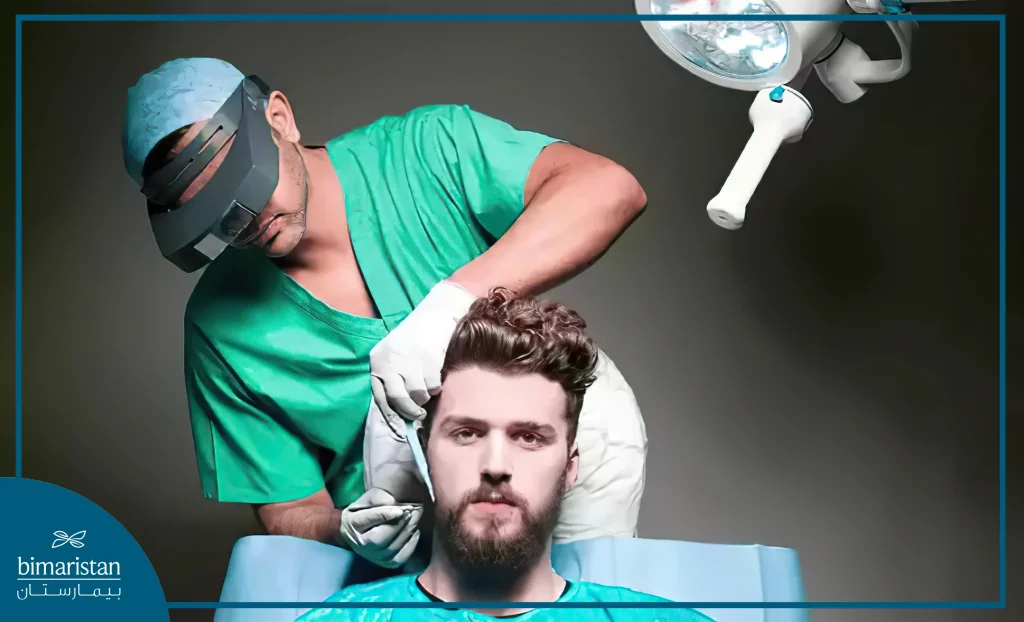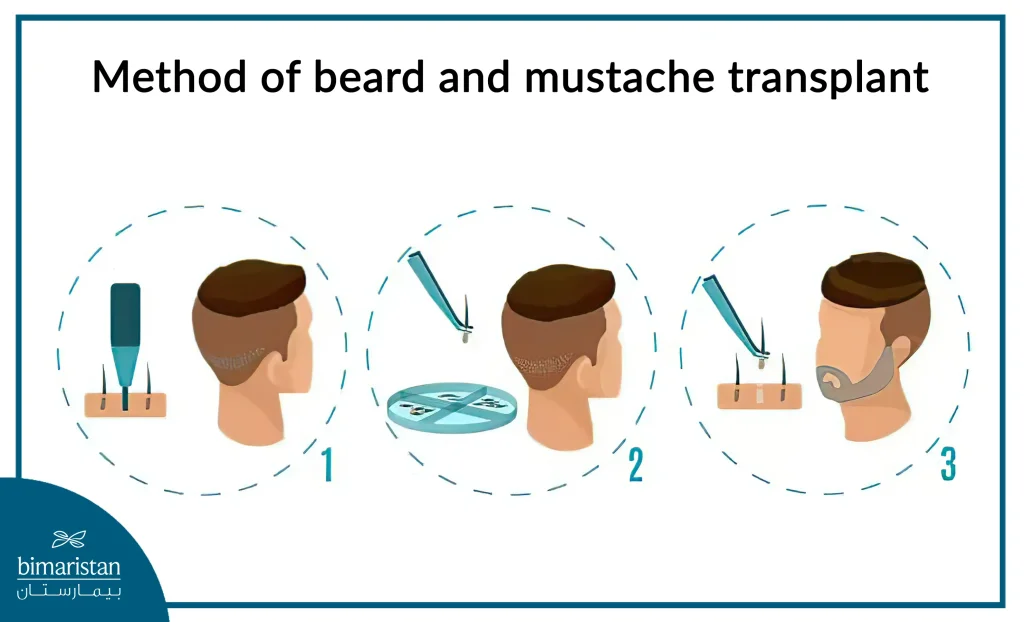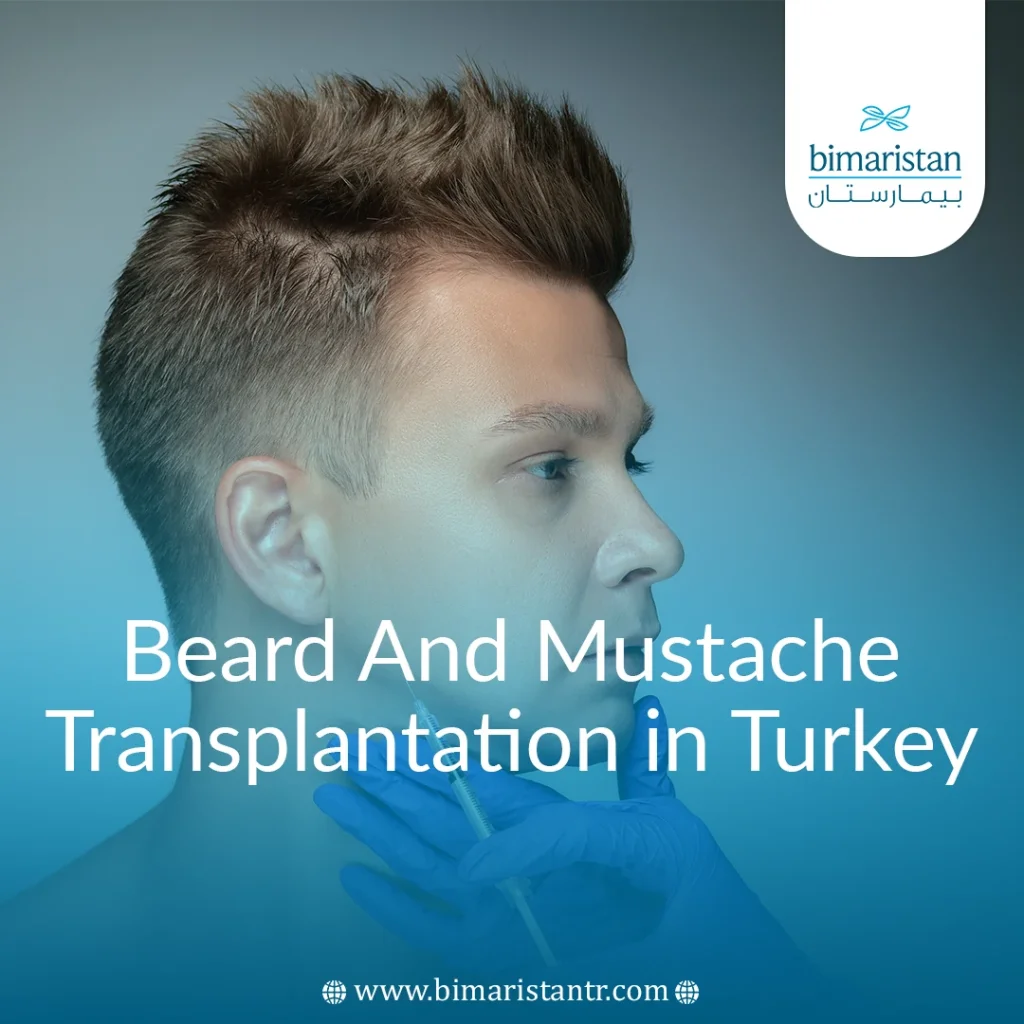It is now possible to undergo beard and mustache transplantation in Turkey using the latest techniques and advanced methods at high-quality centers. The procedures are affordable for everyone and have minimal complications.
This article will present the most essential information about facial hair transplant surgery in Turkey, including costs, prices, and desired outcomes. It will provide a comprehensive overview of this procedure, which has recently become increasingly popular in Turkey’s medical field.
Everything you need to know about beard and mustache transplantation in Turkey
For men, growing beards and mustaches is not just an accessory; it can also reflect a person’s social status or represent their beliefs. There are various stages in a man’s life when he might let his beard grow.
Since men realized they could express themselves through facial hair, various styles and cuts have emerged.
However, a man may sometimes experience patchy or incomplete beard growth, limiting his ability to style his facial hair.
This lack of growth may be due to burns, injuries, scarring, or genetics. This is where beard and mustache transplantation comes into play. With facial hair transplantation, you can now grow the type of beard or mustache you’ve always desired.
Causes of hair loss in men
In general, hair loss can be caused by various factors; in some cases, new hair may spontaneously grow to replace the lost hair. Some of the leading causes of hair loss in men, though not limited to the following, include:
- Hair loss due to psychological stress: Occurs when hair accelerates into the telogen phase (the resting phase) of the hair growth cycle. It does not usually result in completely bald spots and resolves spontaneously after a few months.
- Genetic baldness and hair thinning: Also known as androgenetic alopecia, this is caused by the effects of androgens (such as testosterone in men) on hair follicles, leading to their shrinkage over time. Genetic hair loss typically begins at the temples or frontal hairline in men. It may be more widespread across the scalp in women, particularly post-menopause, due to a decline in female hormone levels.
- Alopecia areata: This is primarily an autoimmune condition that may affect the scalp or other areas of the body. It causes hair loss in well-defined, round, or oval patches the size of coins.
- Tinea capitis (Scalp ringworm): Caused by fungal infections that affect the scalp, this condition is characterized by swelling and redness in the skin beneath the affected area, along with scales and discharge formation.
- Psychiatric disorders (Trichotillomania): This condition typically results in hair being pulled from body areas, often the face, but it can extend to other regions.
- Use of medications and chemical products: The improper use of products such as hair dyes and bleaching agents may cause hair loss.
- Scarring from burns, surgery, or infections.
- Other conditions include anemia, hormonal imbalances, poor nutrition, and inadequate hair care.
Read more about: Hair Transplant in Turkey.

Beard transplantation in Turkey
Beard transplantation is performed by a specialist in skincare because the margin for error on the face is much smaller than scalp hair transplantation. You can now grow the type of beard or mustache you’ve always wanted.
Suitable candidates for beard transplantation
The suitable candidates for beard implants in Turkey are generally healthy men who:
- Men who have patchy or incomplete areas in their beards.
- Adequate hair growth on the back or sides of their head.
- Thin hair or complete lack of hair.
- Men with gaps in their beards.
- Hair loss caused by burns or genetic reasons.
- Hormonal disorders affecting hair growth.
General risks of beard transplantation
The general risks involved in beard transplantation include:
- Infection
- Scarring and redness
- Numbness and loss of sensation
- Temporary appearance of scales
Advantages and disadvantages of beard transplantation
Advantages:
In addition to many advantages, here are some benefits that might make you consider getting a facial hair transplant to achieve a handsome beard and enjoy all its advantages:
- Get the beard you want:
One of the critical advantages of beard transplantation is that you can choose the style of beard you desire. You can customize the look, not just get a full, thick beard like a typical old-fashioned logger.
All you have to do is tell your beard transplant specialist where exactly you want the hair implanted and how much. You choose the style just as you would pick a hairstyle by looking at a picture in a magazine at your favorite hair salon or barber shop.
- Bearded men are more attractive to women (and many other good things):
If you’ve grown a beard and suddenly noticed that you’re getting more attention from the opposite sex, embrace it. This happens to many bearded men, and it’s not just rumors. Numerous studies suggest that many women find men with facial hair more attractive than those who are clean-shaven.
In a recent study, women stated that men with light stubble were the most attractive, and as the facial hair grew, they found the men more masculine.
Moreover, men who participated in the study felt that men with full facial hair appeared more masculine than others.
Disadvantages:
Beard transplants help men achieve the bearded appearance they desire. Studies have shown that they boost a man’s confidence and may make him more attractive to women.
However, there are also some drawbacks to facial hair implants:
- Cost:
There’s no way around it: beard and mustache transplantation can strain your budget, and some men fear the cost. You get the satisfaction and benefits of having a full beard, but it’s not cheap. Asking about the beard transplant’s cost is a crucial matter.
- Hair from other parts of your body:
In many cases, the hair used for the beard transplant comes from the back of your scalp because it closely resembles the hair that grows on your chin and cheeks.
However, the hair has to come from somewhere, and it’s not as though you will have noticeable bald spots on your scalp.
- The transplanted hair will fall out within three weeks:
One of the natural side effects of beard transplantation is hair loss. However, there’s no need to panic, as it’s a temporary side effect, and your hair will fully regrow within your doctor’s provided timeframe. In other words, temporary shedding is simply part of the process of getting the beard you’ve always wanted.
You may also be interested in plasma injections for your hair and face.
Causes of patchy beard growth
If your beard is patchy, you’re not alone. Unfortunately, many men with patchy beards give up and decide that growing a beard is not worthwhile.
We will take a look at the main reasons preventing you from achieving a well-groomed beard.
Genetics:
If your parents are tall, you will also likely be tall. The same principles apply to beard growth: if your father (and his father) had thick, nice beards, your chances of growing a better beard are also higher. Genetics greatly influences us, from our hair color to our mental functions.
The bottom line is that there’s not much we can do about our genetics. We can’t take a pill that changes our genes and grants us the desired traits. However, hope is not lost if your beard is patchy, just like your father’s and grandfather’s. Keep reading.
Hormones:
Hormones are often a primary suspect regarding the “why” of patchy beards. One of the scientific reasons for uneven growth is that blood flow in the cheek area of some men is weaker than in other parts of the face. This is important because fewer nutrients and beard growth hormones reach your cheeks.
This brings us to hormones, specifically testosterone and dihydrotestosterone (DHT). Testosterone, the same hormone that brought us through puberty and into manhood, influences beard growth.
Although this is not always the case, men with lower testosterone levels sometimes have more difficulty growing a full beard.
Alopecia:
Most men do not suffer from alopecia. However, those who do experience patchy bald spots on areas of the body covered by hair, including the beard. It is an entirely treatable condition and may even disappear on its own.
Lifestyle factors:
We are all advised to get enough sleep, eat the right foods, exercise regularly, and not stress too much. These are all good for our overall health, including the health of our beards.
In your diet, nutrients like biotin and niacin help beard growth—at least, many studies say so. So foods like eggs, avocados, milk, fish, sunflower seeds, etc., should be a regular part of your diet.
You can’t change your genes but can give your beard a fighting chance by leading a healthy lifestyle.
When do beard transplant results appear?
Regardless of the method used for the beard hair transplant, the growth will most likely be noticed within two to three months after the procedure. The operation’s success can be confirmed if, after approximately eight to nine months, the person has a complete and dense beard.
Mustache transplantation in men in Turkey
Thick, bold mustaches have proven to be an iconic and influential symbol of maturity, masculinity, and wisdom among men. However, some men are genetically predisposed to thin or absent facial hair.
Men who have suffered from facial injuries or trauma resulting in scarring may also experience reduced hair growth.
This technique guarantees the desired appearance for life. The facial hair surgery lasts 2 to 3 hours, depending on the number of follicles, and is performed under local anesthesia. It is a microscopic surgery requiring extra care due to the sensitive area and facial structure, though the operated area typically heals faster than other regions.
Ideal candidates for mustache transplantation
The ideal candidates are men without facial hair or who experienced facial trauma that prevented facial hair growth. Whether the absence of facial hair is due to genetics, acne scarring, or injuries, facial hair transplantation offers a viable solution for these cases.
Risks of mustache transplantation
- Infection
- Scarring
- Numbness
- Loss of sensation
- Need for corrective surgery
Beard and mustache transplantation method
You will undergo preparations to stabilize excess blood vessels, shave hair, and sterilize the operating room.
Your procedure will last 4-7 hours, depending on how many follicles are transplanted.
After harvesting the follicles from the donor area, you will take a lunch break. Meanwhile, the harvested follicles will settle in the transplant fluid to maintain their shape.
In the second part of the procedure, the harvested grafts will be implanted in the designated areas, considering the natural angle of the hair follicles to achieve a more natural appearance.
After the direct hair transplantation procedure, your host will explain post-surgery instructions and provide you with the necessary medical supplies and medications. A shuttle service will then transport you to your hotel.

The day after surgery:
You are expected to avoid physical activity as much as possible to prevent damage to the newly transplanted grafts. Instead, you can spend the day in your comfortable hotel room.
The second day after surgery:
The medical team will wait for you at the hospital for the first washing session. You will be able to see and learn the tips on how you are expected to wash your hair.
The third day after beard and mustache transplantation:
You can return to your country if you wish. There is no longer any need for medical team intervention. However, if you plan to stay in Turkey for over ten days, you can have a crust removal session on the tenth day. If not, don’t worry. The foam provided will soften the crusts until they fall off naturally during washing.
After mustache transplantation in Turkey:
Mustache hair transplant requires post-surgery care, which is more sensitive than hair transplantation, as it is done on the face. Some bleeding and swelling may occur in the hair follicles, but the area will heal quickly and return to normal.
After the surgery, expert doctors and a medical team wash the first root within three days, and the roots should not be touched. These crusts are shed during the washing period, and the final shape takes about a year to form.
Additional tips to consider:
- The transplanted area should not be scratched or rubbed.
- The treated area should remain dry until your doctor performs the first washing.
- No chemical products such as shaving lotion, cologne, or cream should be used.
- The treated area should be protected from impacts and shocks.
- The doctor’s prescribed medication and care products should be used regularly after the transplant.
- Avoid exposure to sunlight for the first 15 days.
- Avoid strenuous exercise, stress, and activities that may cause sweating in the first week.
- The treated area should be kept clean.
- The lips should not be stretched or moved excessively in the first three days after the procedure.
Eyebrow hair implants for women and men in Turkey
Background:
Historically, eyebrows were reconstructed by transferring a scalp flap or grafting a composite scalp graft. Both techniques can result in significant morbidity and a very dense, unnatural-looking brow. Eyebrow hair transplants with excellent results have been described but have been relatively underreported in the medical literature.
The objective of eyebrow transplantation:
To determine whether modern techniques of hair transplantation with fine precision can appropriately recreate a cosmetically pleasing eyebrow in the case of therapeutic-induced eyebrow alopecia.
The method of eyebrow hair transplantation:
For example, a 33-year-old woman with therapeutic-induced eyebrow hair loss underwent four eyebrow hair transplant surgeries to recreate both eyebrows.
Results:
A suitable aesthetic eyebrow was recreated with the appropriate hair direction; though the process is time-consuming and tedious, it is highly effective.
Conclusion:
Eyebrow implants are a straightforward procedure that can be performed in the office under local anesthesia with minimal associated symptoms. The outcome may be superior to more complex eyebrow replacement procedures.
Some studies on beard and mustache transplantation:
Some studies have provided good results for eyebrow transplantation using FUE (Follicular Unit Extraction) rather than the strip method.
Contact us to learn more about beard and mustache transplantation for men and understand the methods used for women.
References:
- Facial Hair Restoration: Effective Techniques for Beard and Eyebrow Restoration, Bared and Epstein.
- The Beard Issue, International Society of Hair Restoration Surgery.
